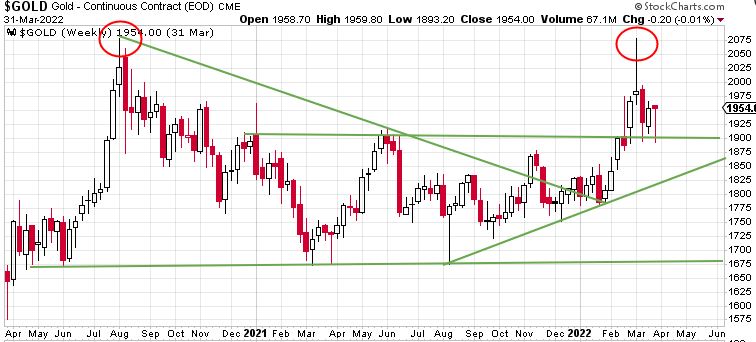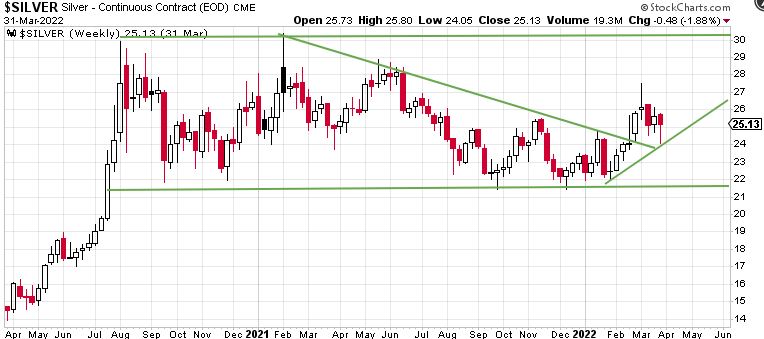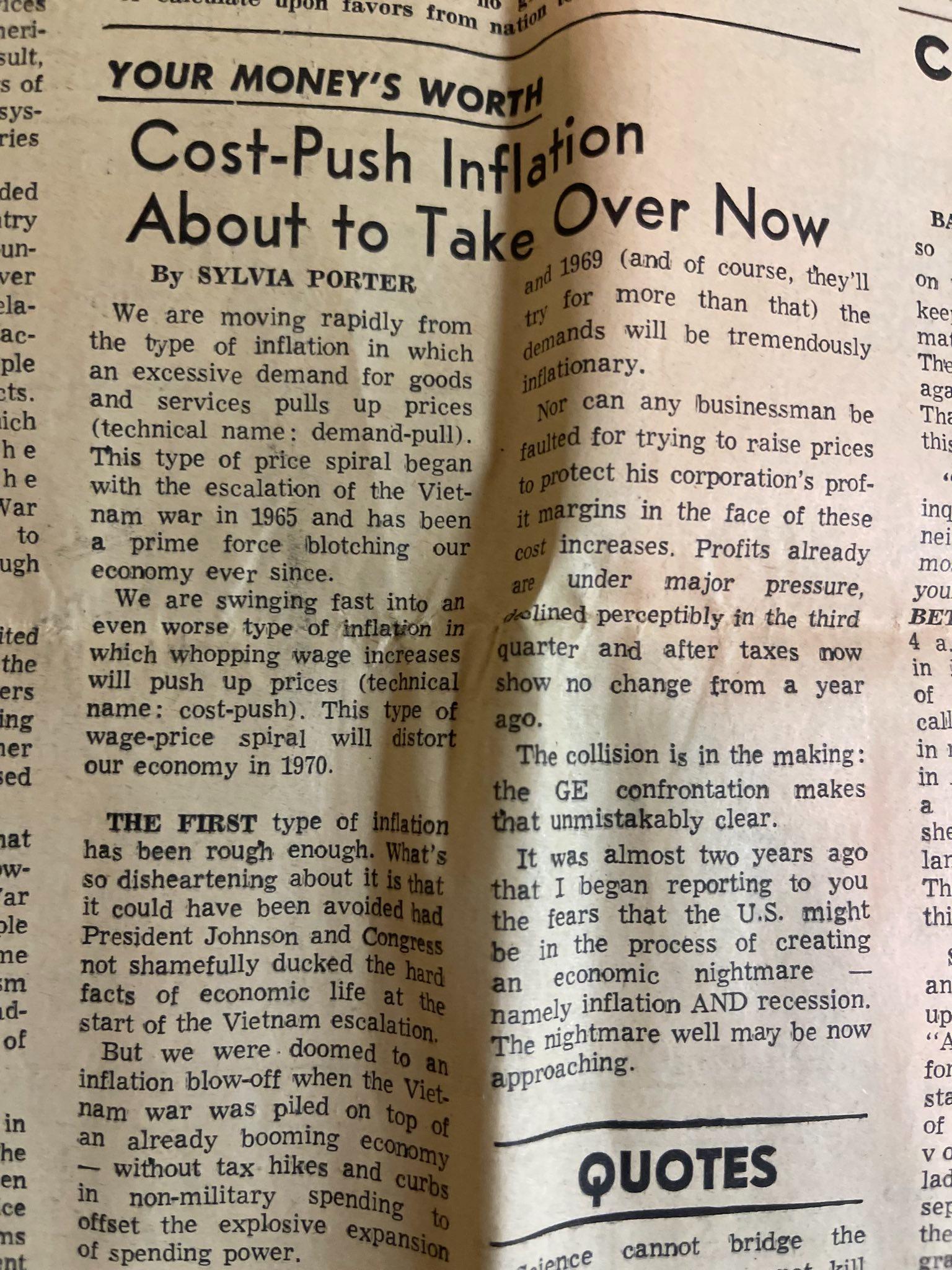
April 2022
What can we say? Over the last two years, we have seen how quickly the world can change. Now, over the last two months, the pace of change has accelerated. Nobody knows with any level of certainty how things are going to unfold from here. The only given is that the macro geopolitical and economic conditions that are with us now are not going away any time soon.
During times like this, there have been few better long-term assets to own than gold and silver. That means a strategy of dollar-cost-averaging into the market (via our Automatic option) and buying the dips (via our Now option) is likely to produce results over the intermediate to long term.
With that said, let's get right to it.
The OWNx Team
Gold and Silver
What Do the Charts Say?


In our February newsletter, we made the case based on the charts that the two-year downtrend and consolidation had ended. The price action in both gold and silver over the last two months has confirmed that. In fact, the gold chart shows a push toward the all-time high, which was set in August of 2020. The fact that it failed to close at a new high is a good thing. Run-away markets like that have never proven to be sustainable.
Instead, gold fell back and has found increasingly strong support in the $1,900 range. That support should blunt any strong down moves should some form of peace agreement come out of the Ukraine/Russian conflict. If that were to happen, a possible scenario would be a return to the uptrend line that has now formed and a resumption of a steady climb in the price of gold from there.
The silver chart is finally telling a little different story. For nearly two years it has been trapped within a sideways channel with a bias to the downside. It is still in that channel, however, over the last two months, it too has broken out of its two-year down to sideways consolidation pattern and is painting a picture similar to gold, albeit a lagging one.
Silver needs close monitoring here. It has yet to reach its high (near $30) over the last two years. When it decides to play catch up with gold, the moves can be explosive. Should peace break out in Ukraine/Russia, the price could quickly move back to support in the $22 range. From there we would expect to see a new uptrend line form from there. With that said, as we said at the top of the newsletter, very little is predictable now. We are simply presenting a few scenarios to consider.
Is Now the Time to Own "Things?"
Before the Ukraine/Russian conflict exploded on the scene, the price of goods and services were already advancing at levels not seen in decades. Price inflation was largely driven by loose money policies due to national government reactions to COVID, and the subsequent demand created as the economy restarted.
However, in the last two months, commodity prices across the board have exploded upward. Input costs such as gas, diesel, and fertilizers have done the same. This is a game-changer because it sets the base cost level for production at a much higher level.
The article on the right was sent to us by a friend who was doing research in his local library. At first glance, we thought it was from a recent newspaper. However, it was actually written in 1969. The forces that were in place at that time are similar to what we are facing today. The result then was nearly a decade of "stagflation."
As much as we don't want to say it, it is possible that stagflation could be a near best-case scenario today. That is because the global economic and monetary systems are much more interdependent than they were in the 1970s. Yet the global inflationary pressures of the late 60s and early 70s led to President Nixon "closing the window" on international gold redemption for the US dollar. Today, our monetary system is fiat and debt-saturated. It's difficult to know what policymakers will do today as inflation entrenches itself in the global economy. We believe this is all the more reason to have tangible assets, like gold and silver, as portfolio insurance.
